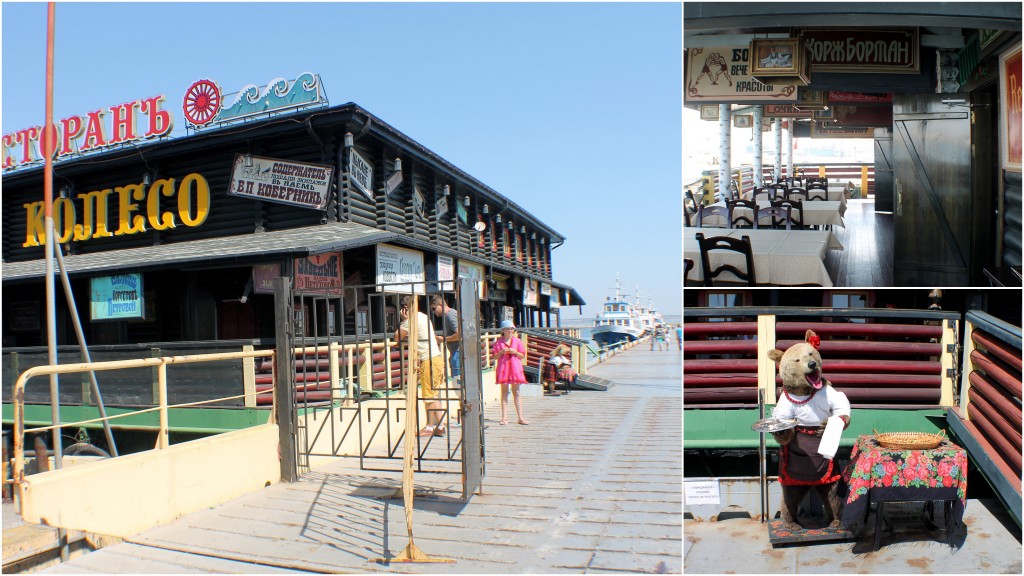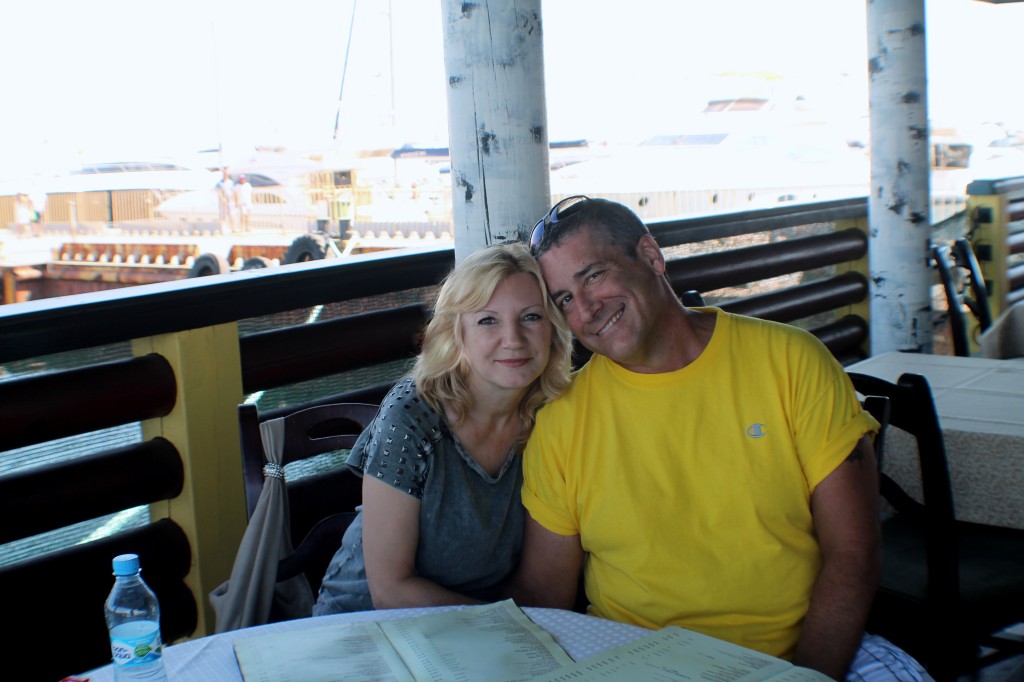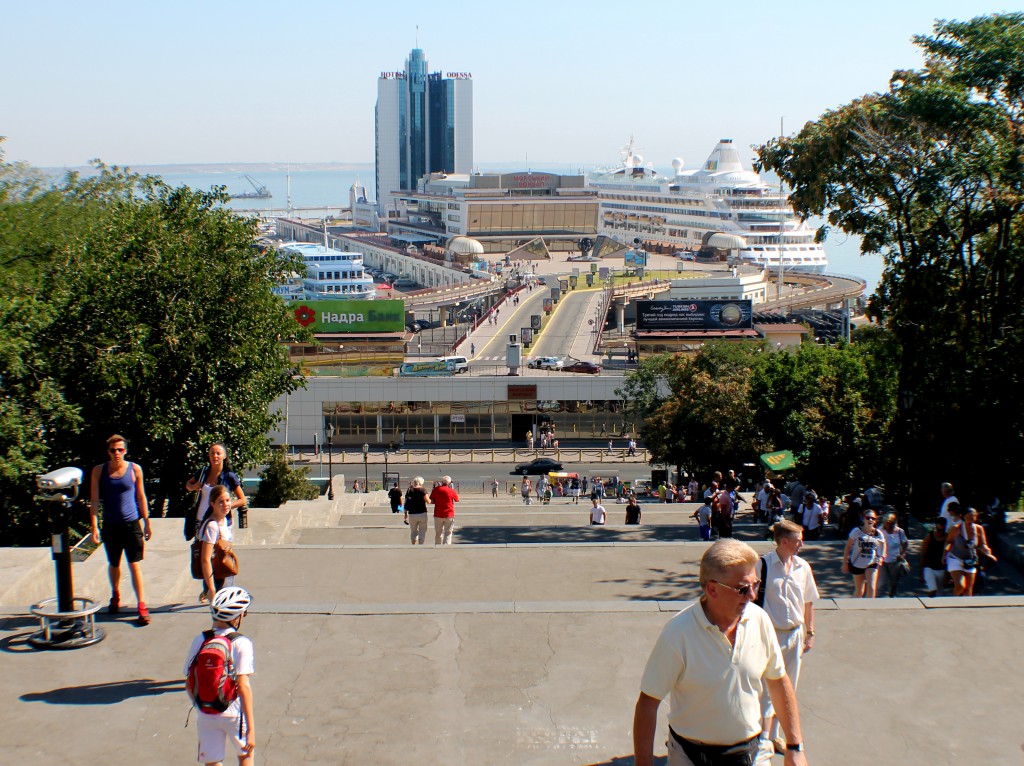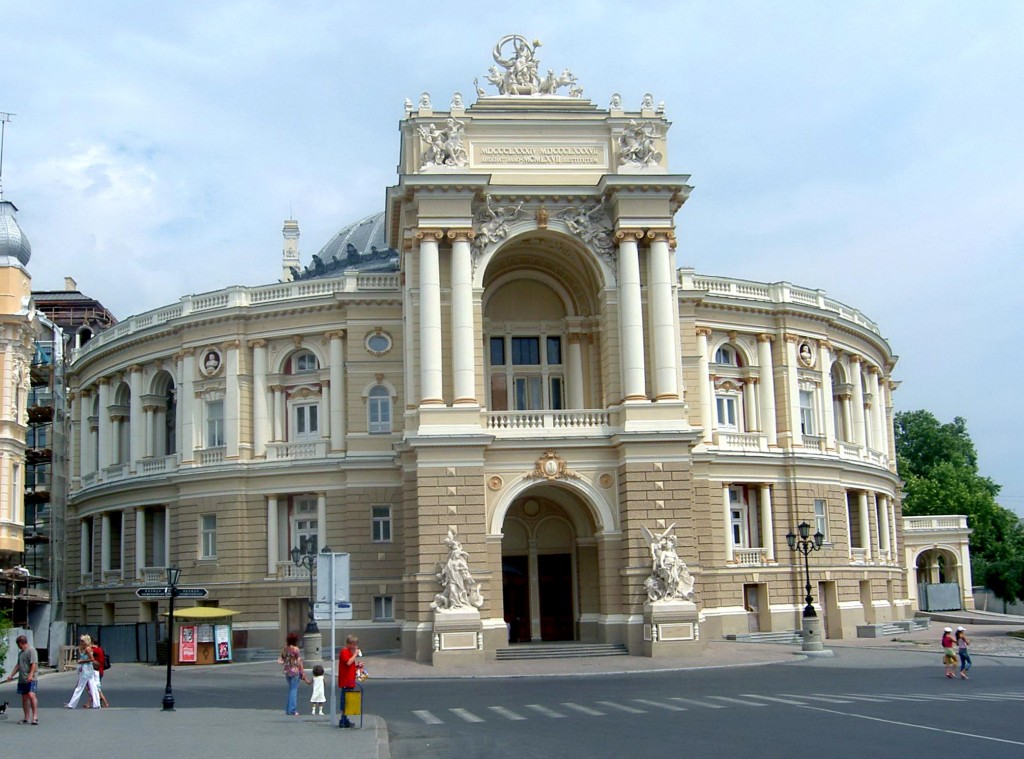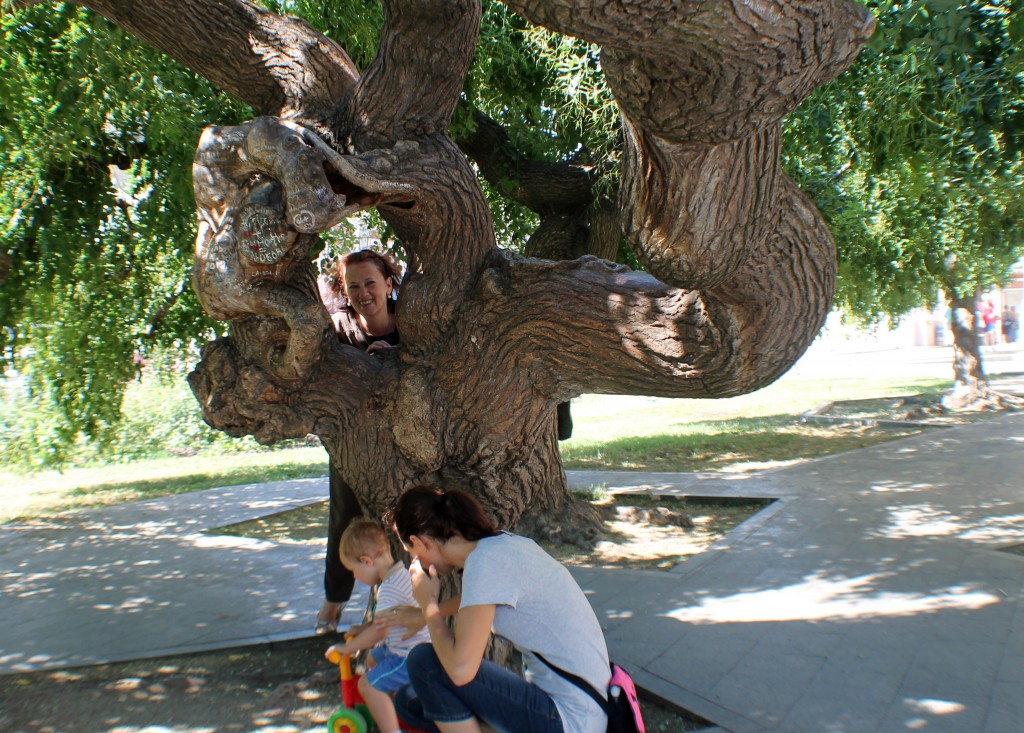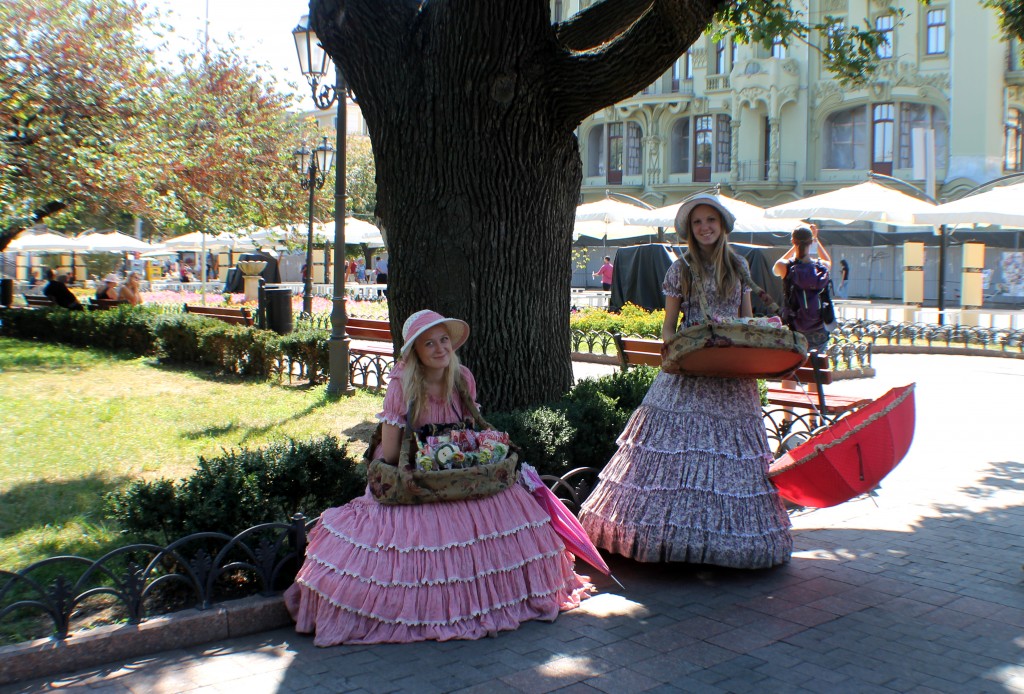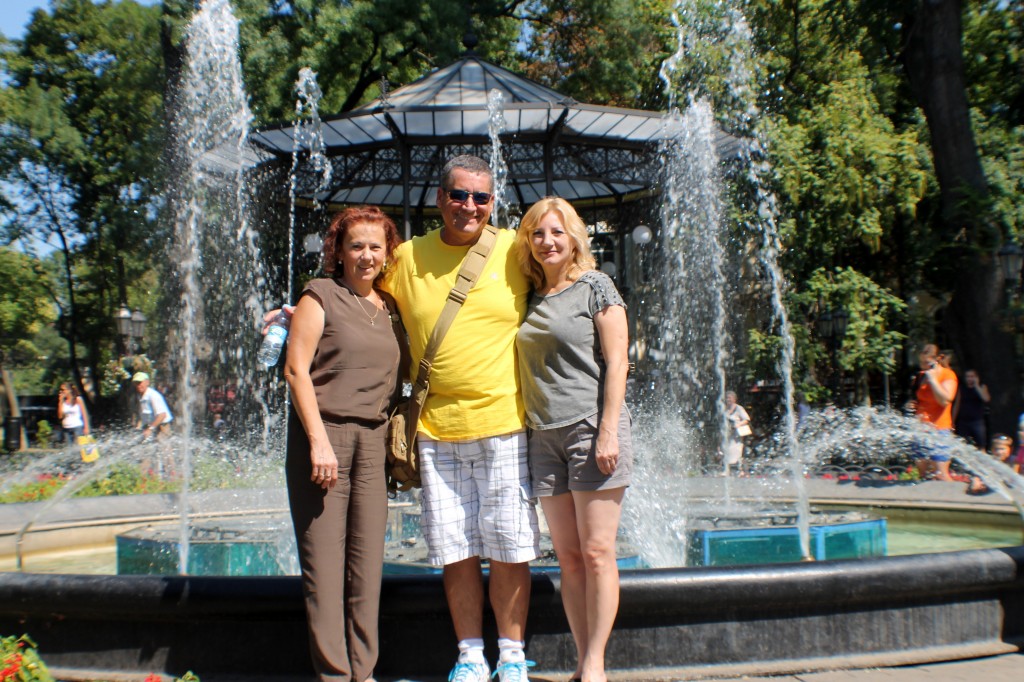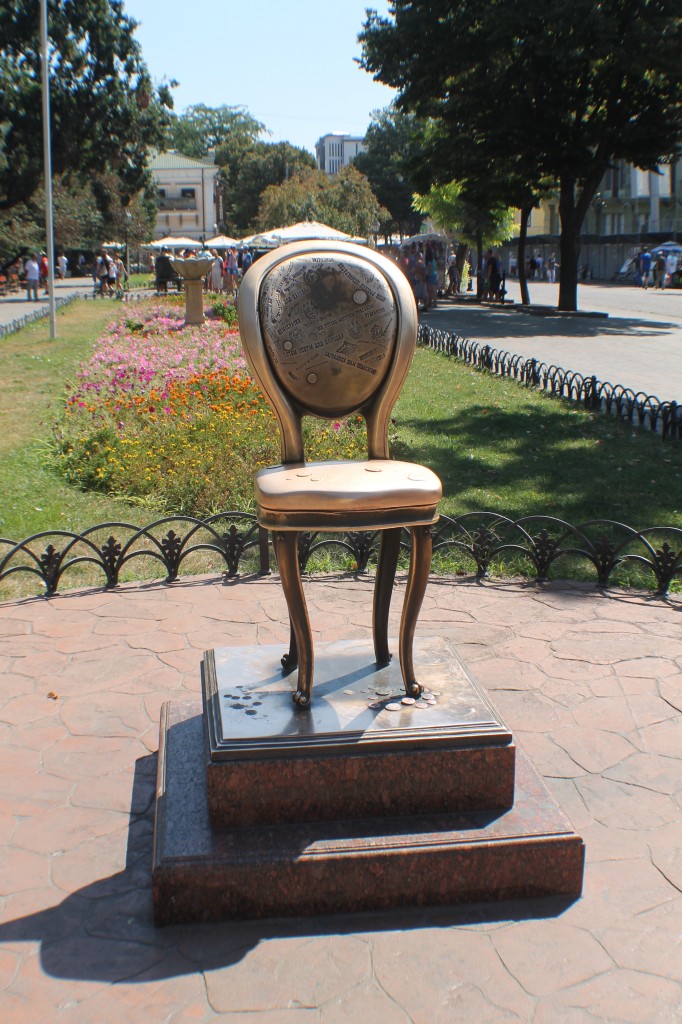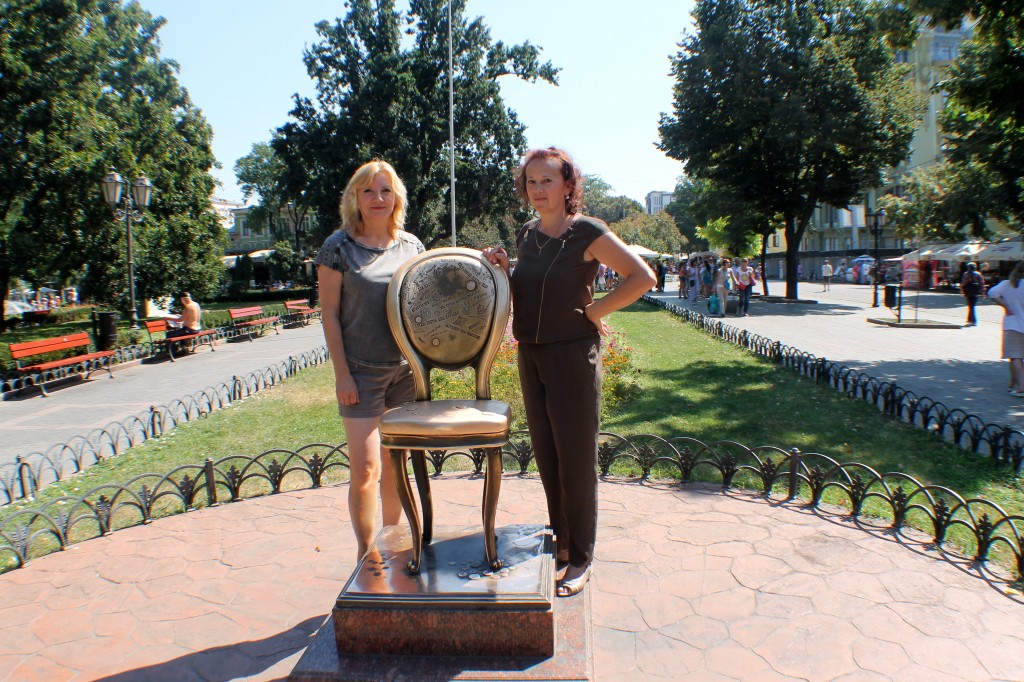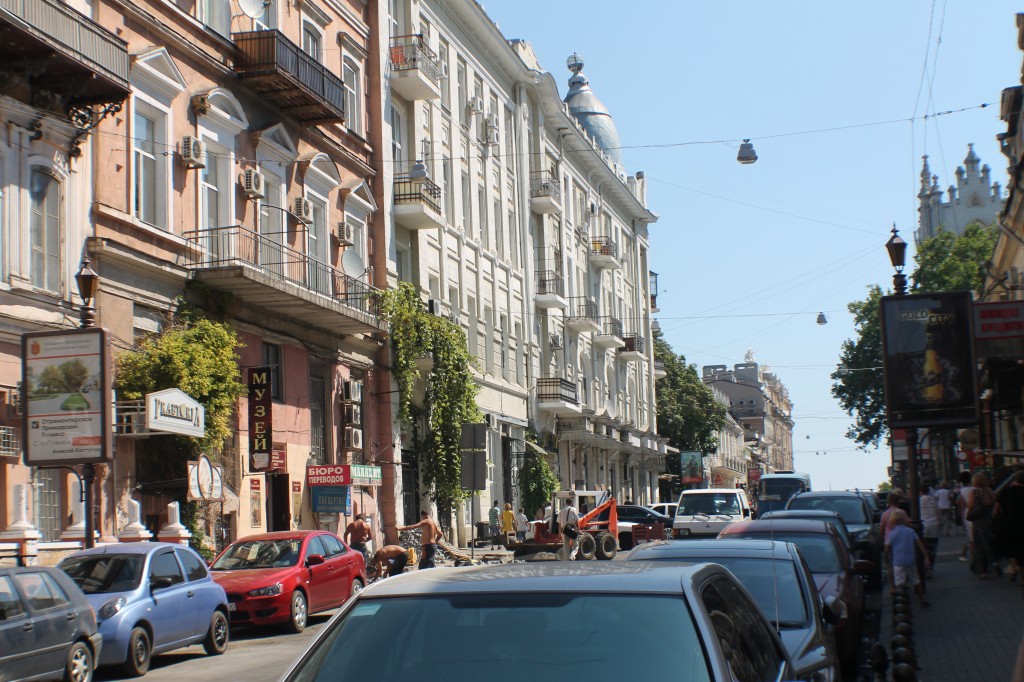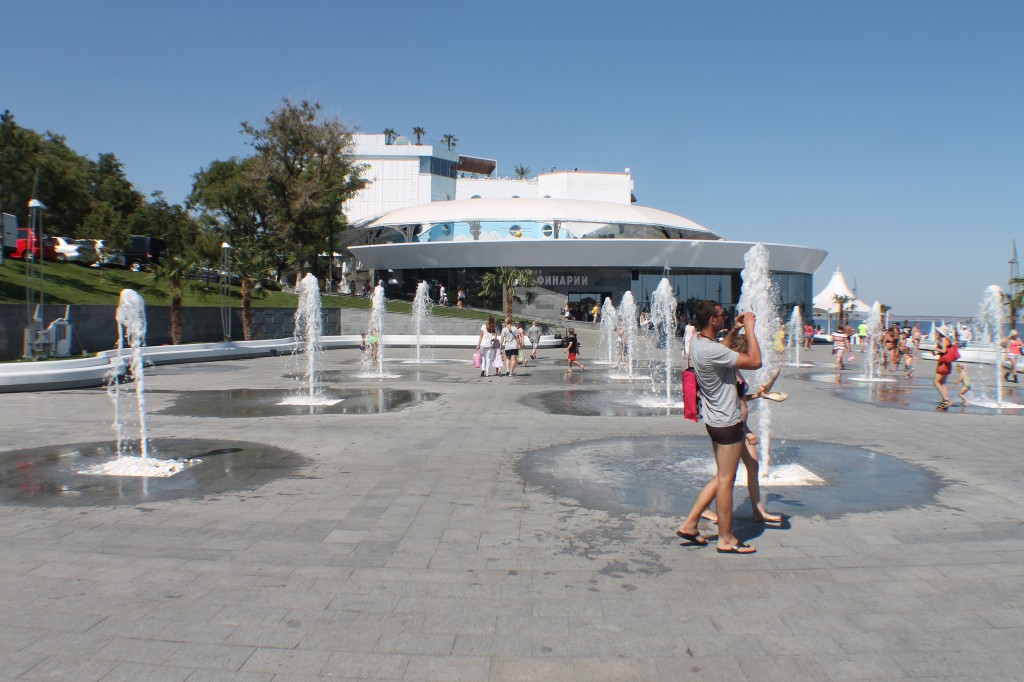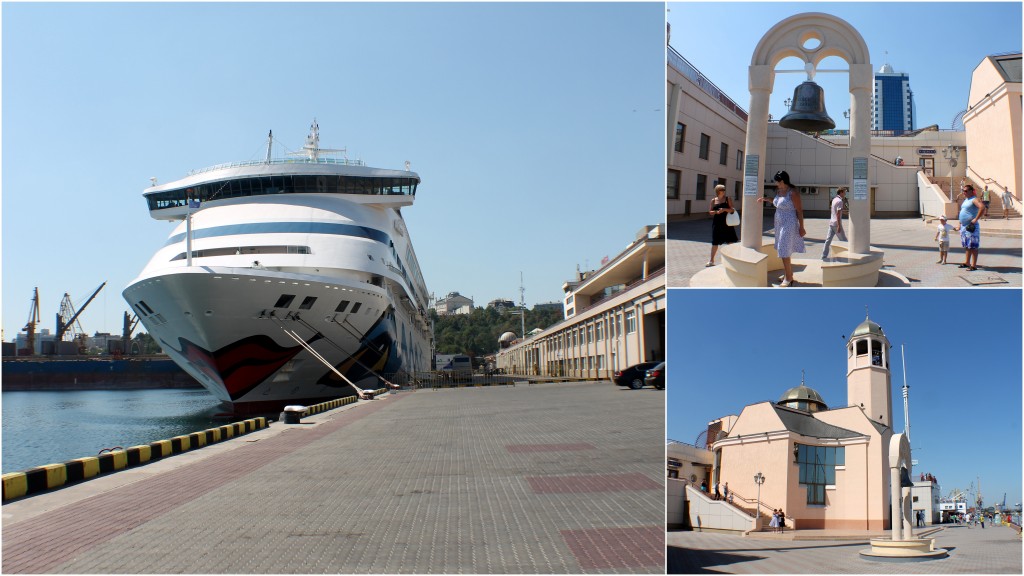It was nice to visit Odessa again after many years. Dave and I had a great time strolling through Odessa with friends. Odessa is one of the few regions in Ukraine that are inseparable from the Black Sea. We could feel the comfort and warmth of narrow streets, and marvel at the architectural creations of the old masters. Today Odessa is one of the most important economic centers of Ukraine, the third largest city after Kiev and Kharkov with a population of over 1 million people.
Each city has its own architectural treasure or quarter that has become its symbol. Odessa is proud to have several such symbols. The Potemkin Steps and the Monument to Duke de Richelieu are among them.
The Potemkin Steps descend from the Duke monument down to the Marine Passenger Terminal (Morskoy Voksal) and they are the front entrance to Odessa, Ukraine. The legendary 192 steps were a gift from Earl Vorontsov to his wife Elizaveta. They got their contemporary name after the success of the Soviet movie Battleship Potemkin.
The monument to Duke de Richelieu is located on Primorskiy Boulevard, at the top of Potemkin Stairway. Legend has it that the first mayor of Odessa, French Duke de Richelieu, wanted to make a city surpassing Paris in beauty. Although today we can’t compare the French capital with the pearl of the Black Sea, there is no doubt that Richelieu succeeded in making a city of unique beauty.
Duke of Richelieu was born in France. He came to Odessa after the French revolution and was governing the city for eleven years. He gave Odessa their first lyceum, first theater and first library. He established the famous free port regime which gave a great boost to Odessa’s economy.
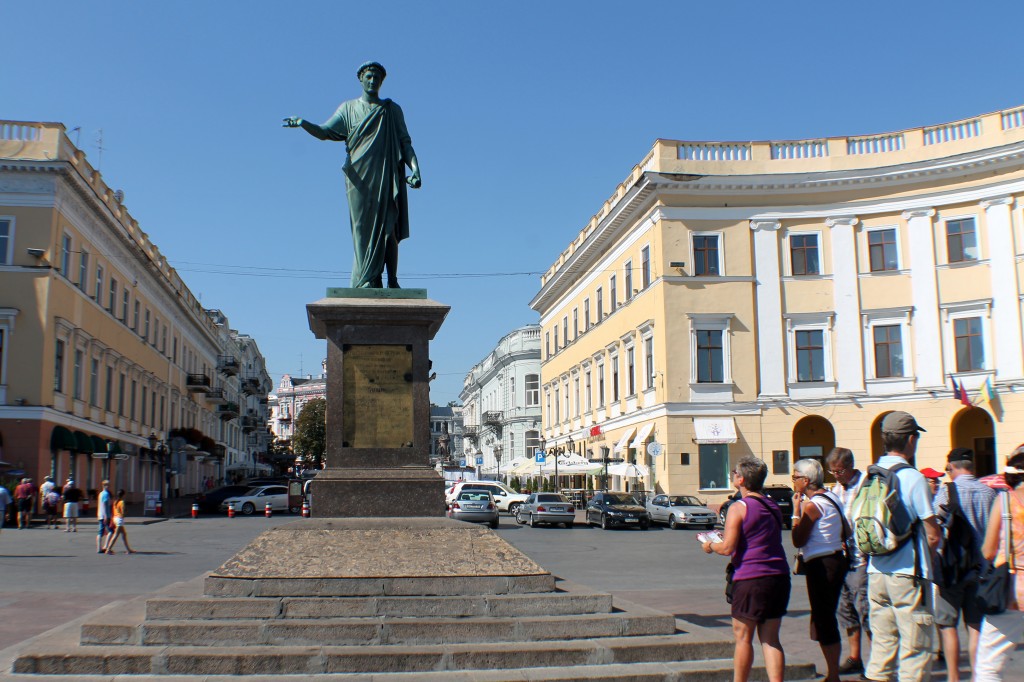
The main entrance to the Primorskiy Boulevard from the sea has always been the Potemkin Steps. It is one of the best views in the city overlooking the harbor and bay. Many beautiful historical buildings can be observed while walking on Primorskiy Boulevard. The hotel Londonskaya and City Council Hall with a Tiger Frigate Cannon are among them (see below).
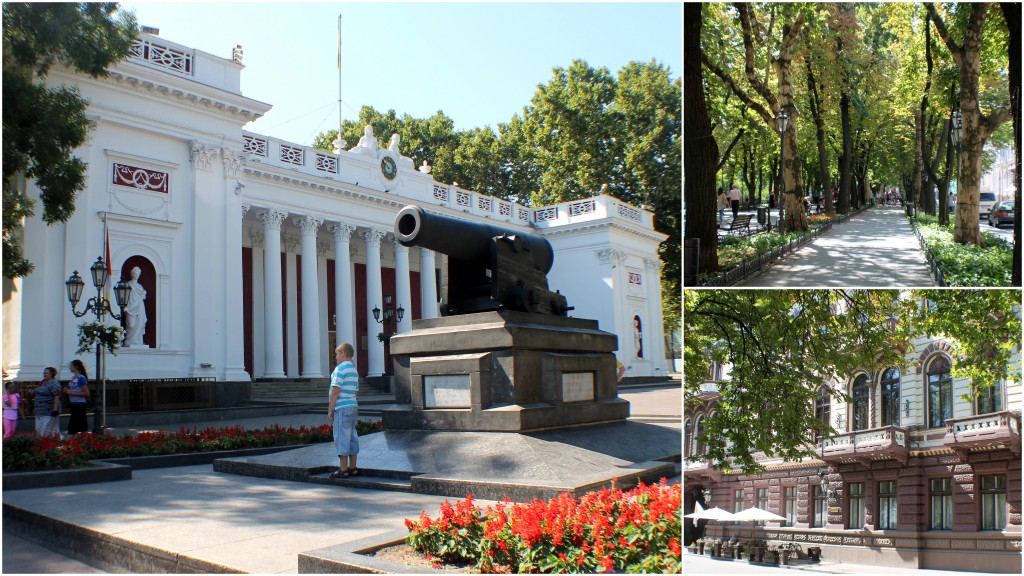
The boulevard itself is one of the best examples of classic architecture existing in Ukraine and opens to an impressive view of the Odessa port. One side of the boulevard ends at Dumska Square, and the other ends at the grand Palace of Earl Vorontsov.
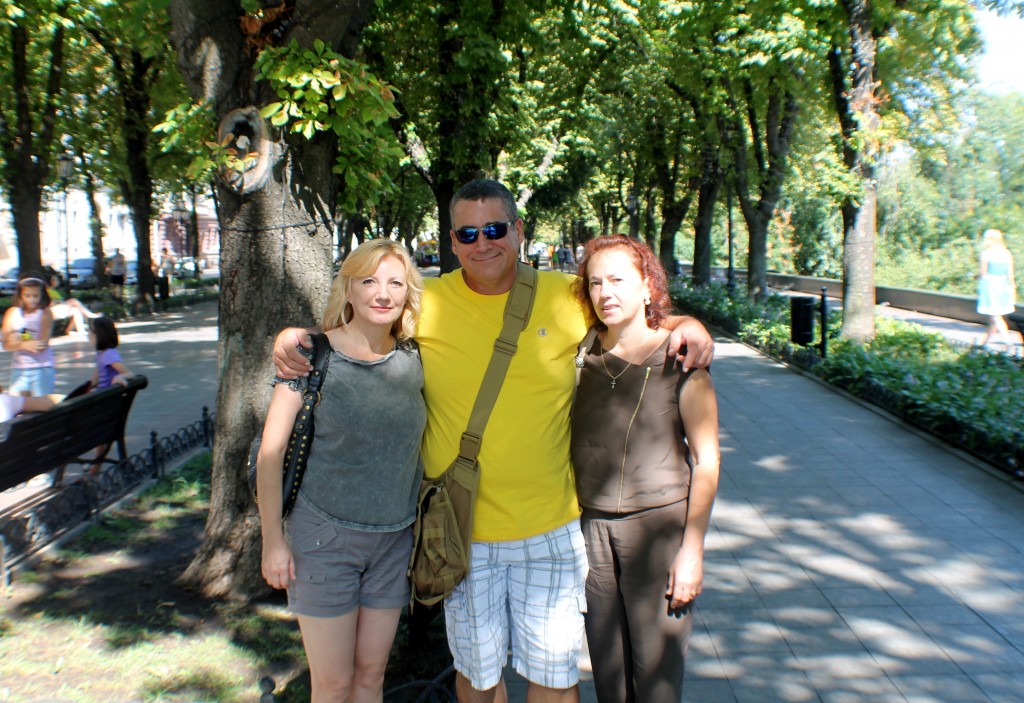
Odessa Opera and Ballet Theater, are the second most beautiful in Europe after Vienna, where the singing of Sobinov and Chaliapin was heard, and the performances of Tchaikovsky and Rimsky-Korsakov were seen.
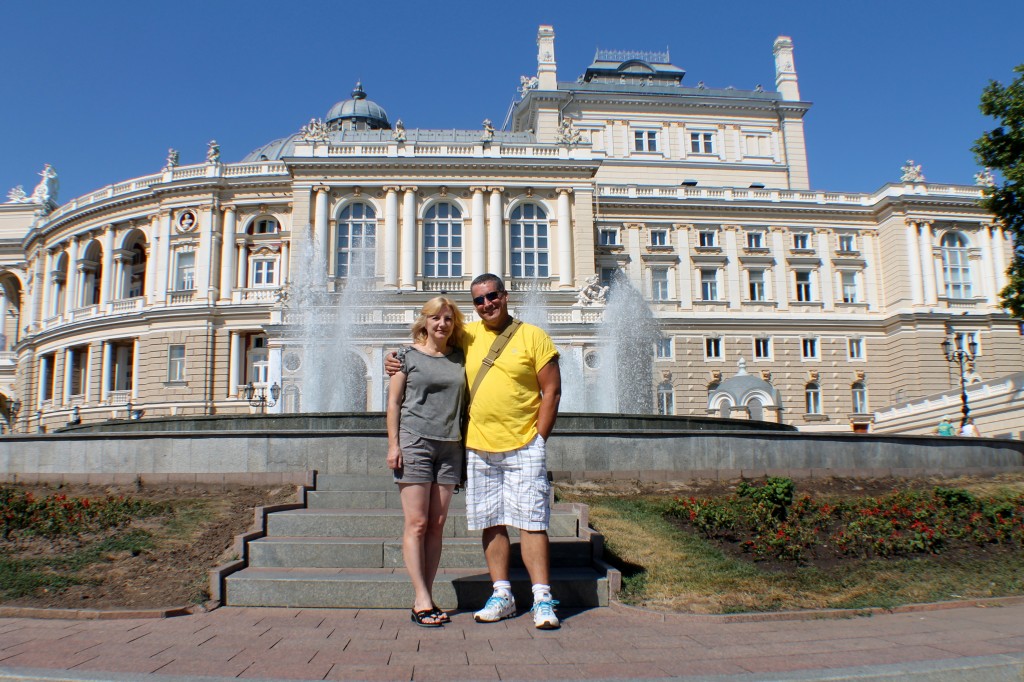
Here is only the upper part of the theater in the picture. There was a lot of tour-buses at the time, so I couldn’t have taken a better picture. The uniqueness of the Odessa Opera House is its acoustics. A whisper in the hall can be heard very well in any part of it. The theater is gorgeous inside as well. All the parts inside are very in tune with each other: the dome, columns, arches, bas-reliefs, candles, gilding, combined with amazing color of the walls and ceilings. I was stunned when I walked into the theater for the first time a long time ago.
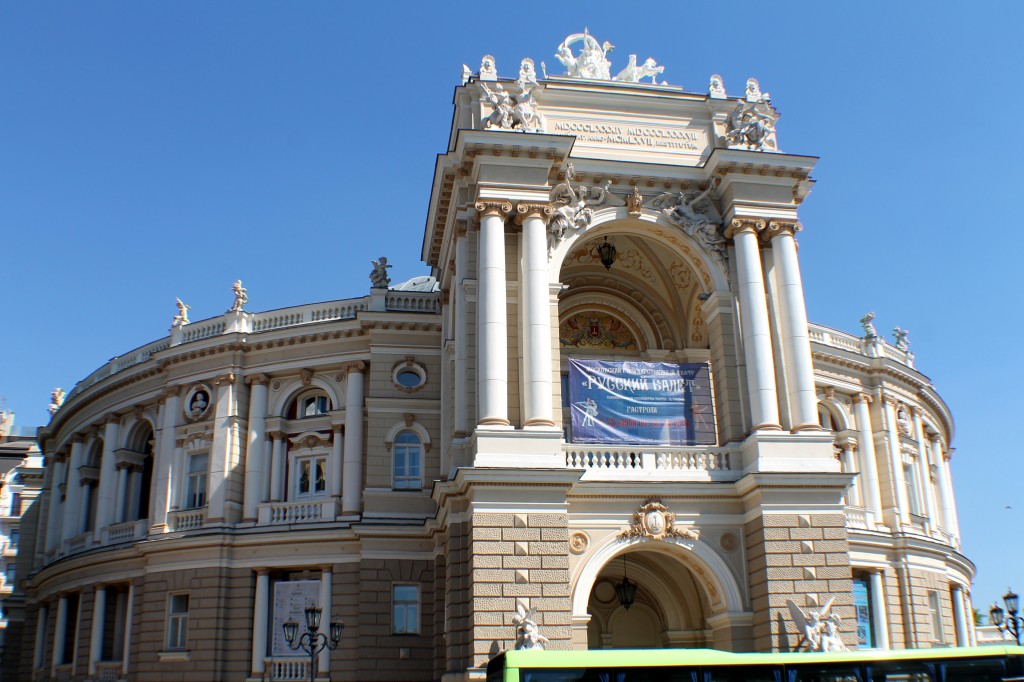
Here is the full view of the theater from vikitravel.com.
The street view of the area near theater.
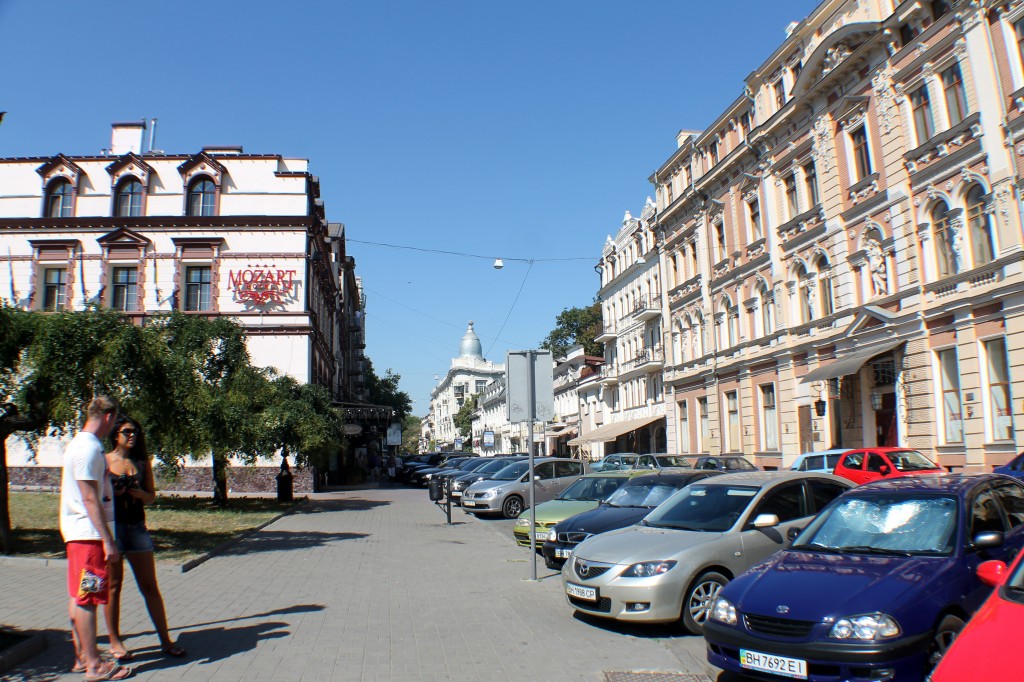
We passed a cute little park near the theater.
We saw some interesting signs while walking Odessa’s streets.
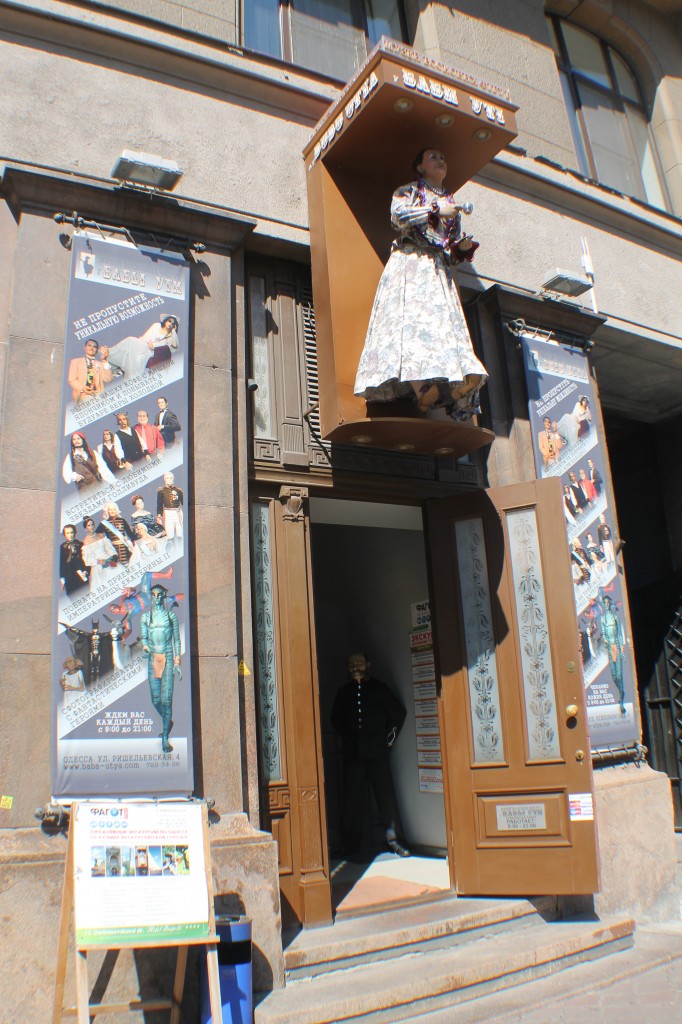
Derybasivka Street is the heart of Odessa and is named after José de Ribas, who contributed much to the development of the city, including its port.
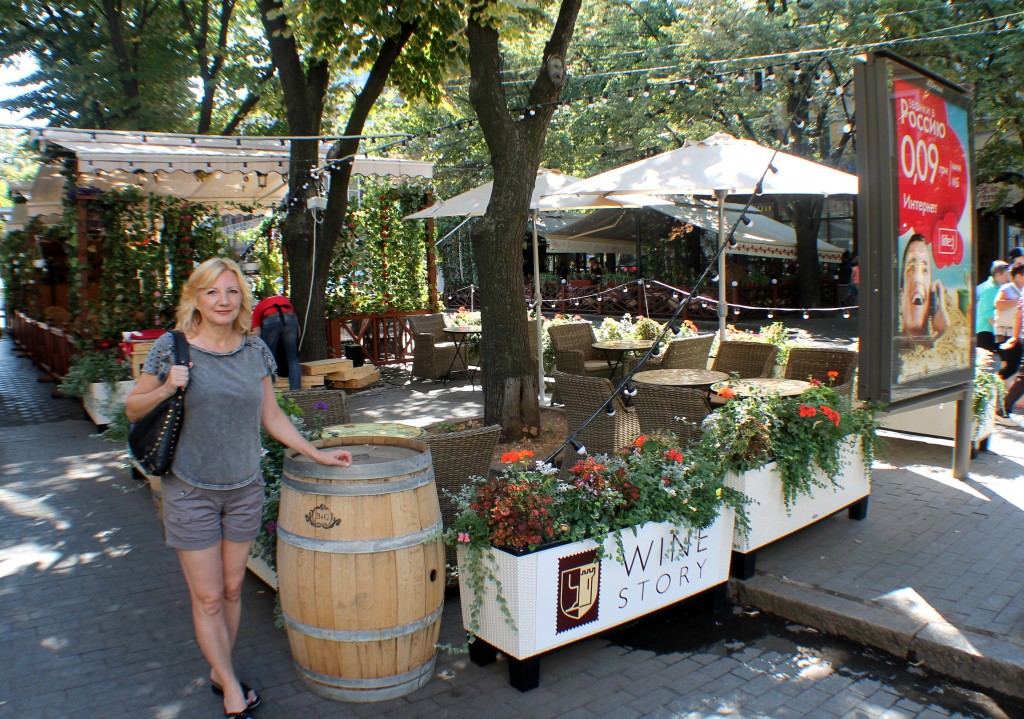
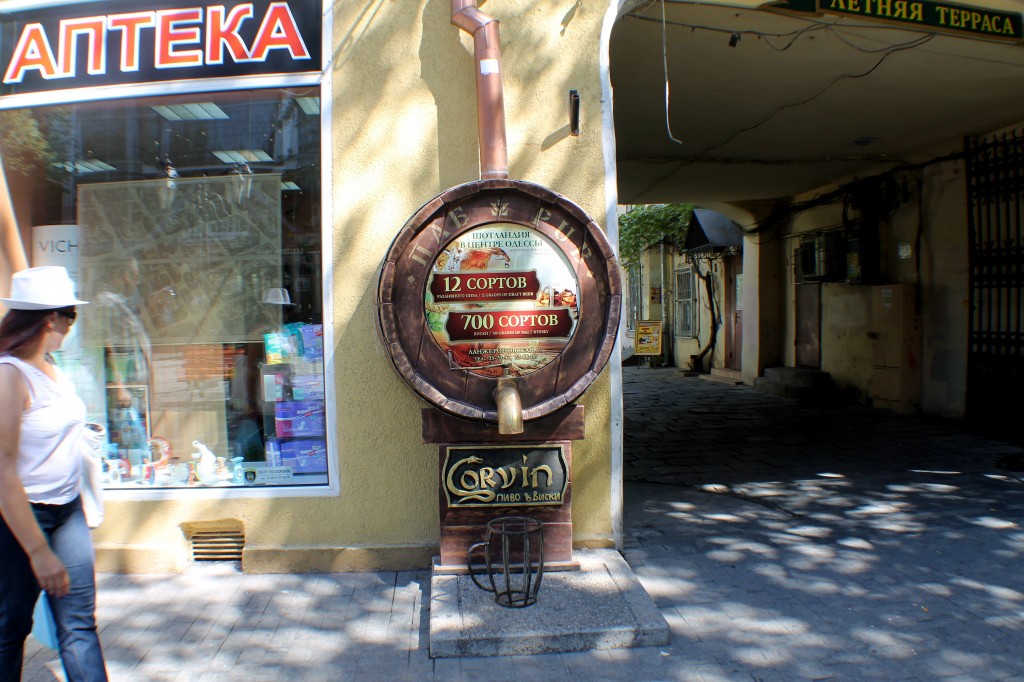
Odessa City Garden is the first park of downtown. It is more than 200 years old. The City Garden was a present from Odessa’s founder’s brother, Felix De Ribas. Now it is the place of the Twelve Chairs monument, the Odessa Heart monument and some others.
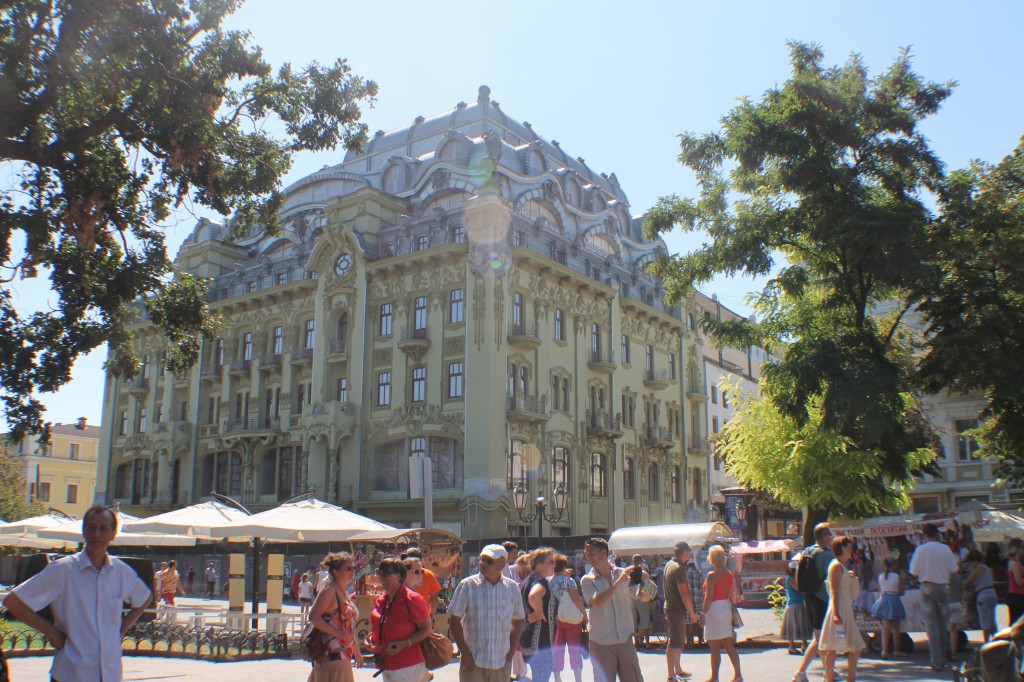
Twelve Chairs monument is based on a classic satirical novel The Twelve Chairs written by the Odessan authors Ilf and Petrov, released in 1928. Its main character Ostap Bender reappears in the book’s sequel, The Little Golden Calf.
More views of Odessa streets.
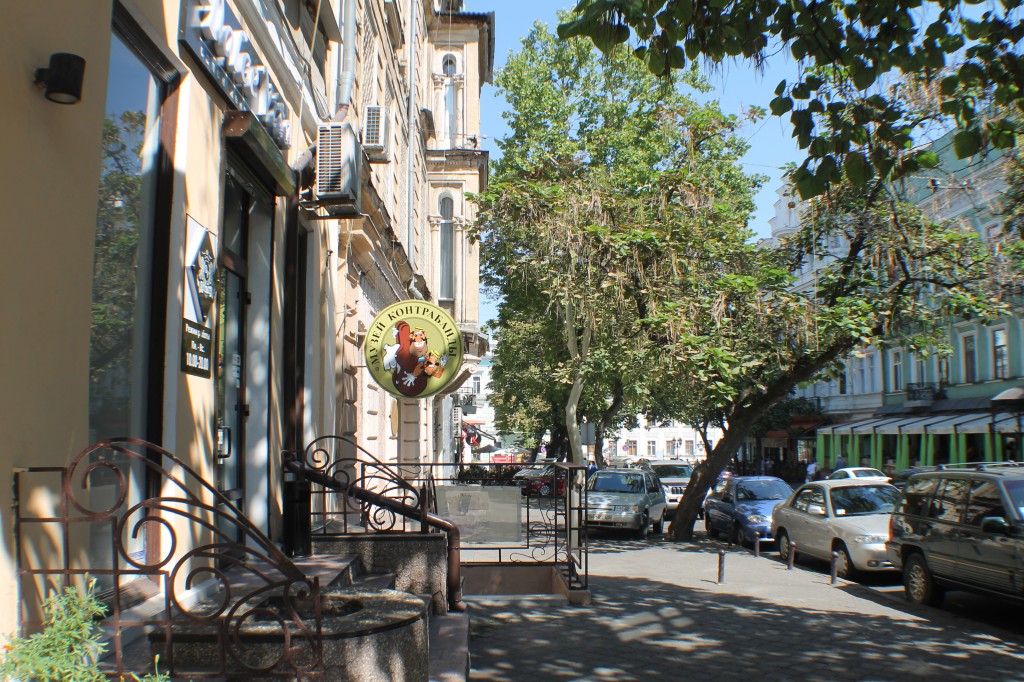
We passed one of the cutest signs there.
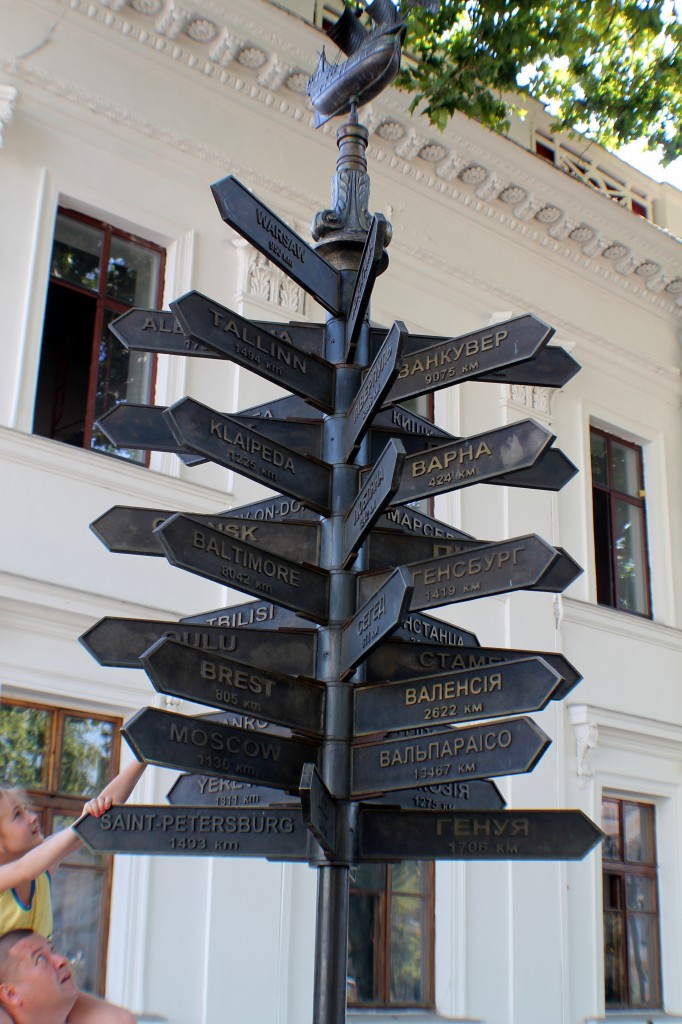
Statue of Catherine the Great. The city of Odessa was founded by a decree of the Empress Catherine the Great in 1794.
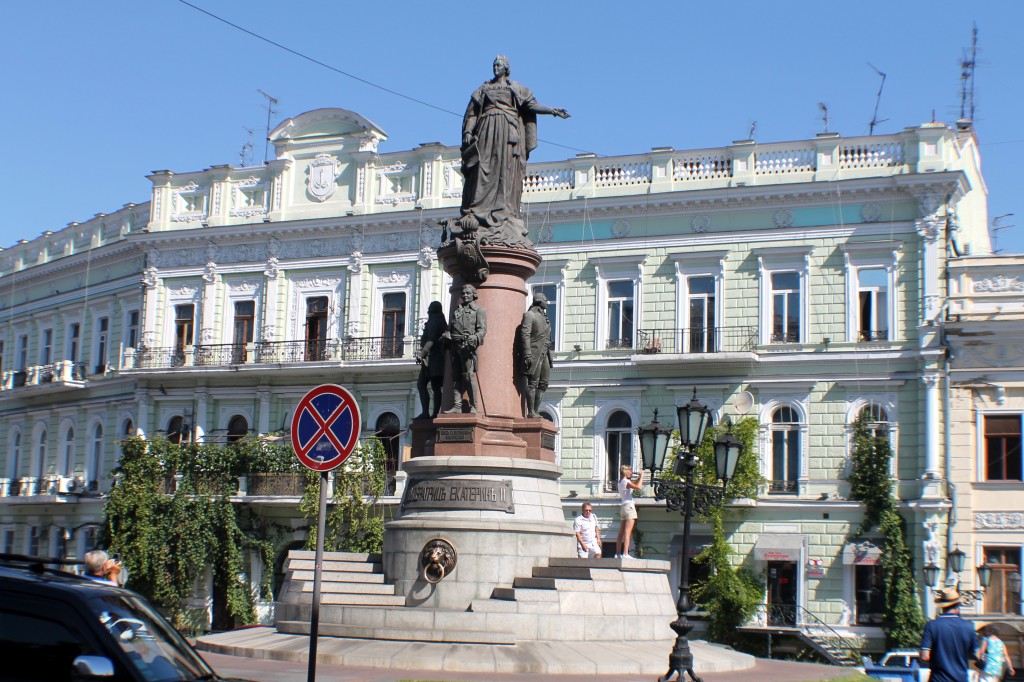
Odessa is not only known for architectural monuments and sights, but also its infinitely long sandy beaches. The total length of the urban beaches of Odessa is about 20 km. Here is one of the most famous Odessa public beaches, Langeron, which is a popular Odessa beach among locals and tourists alike.
This is the closest beach from Odessa’s historical center and about a 15 minute walk from the Opera Theater. Langeron stretches over many different beaches, each with its own unique Odessa flavor. Some are fully equipped while others were left alone in their natural state. Langeron is located parallel to park Schevchenko.
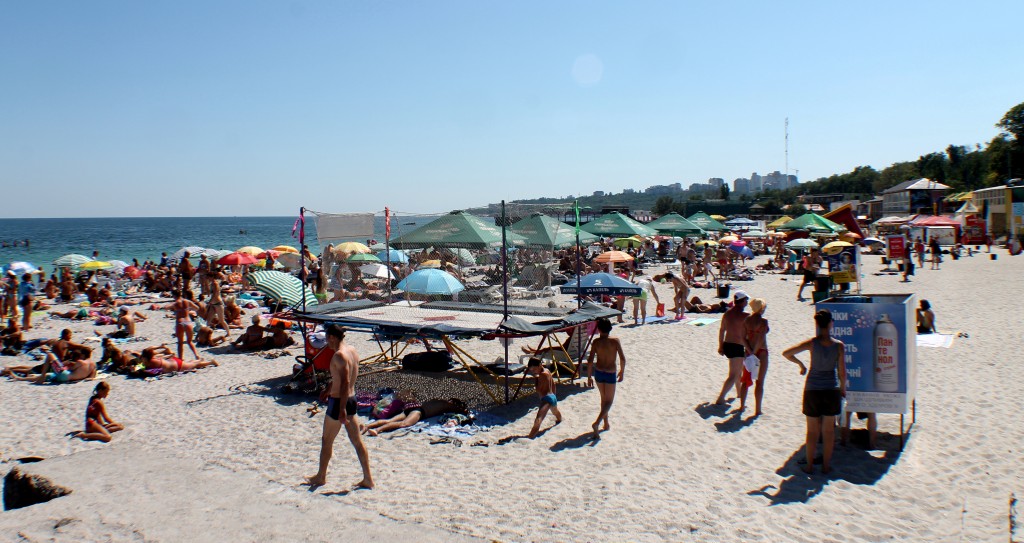
It was very crowded there at the time.
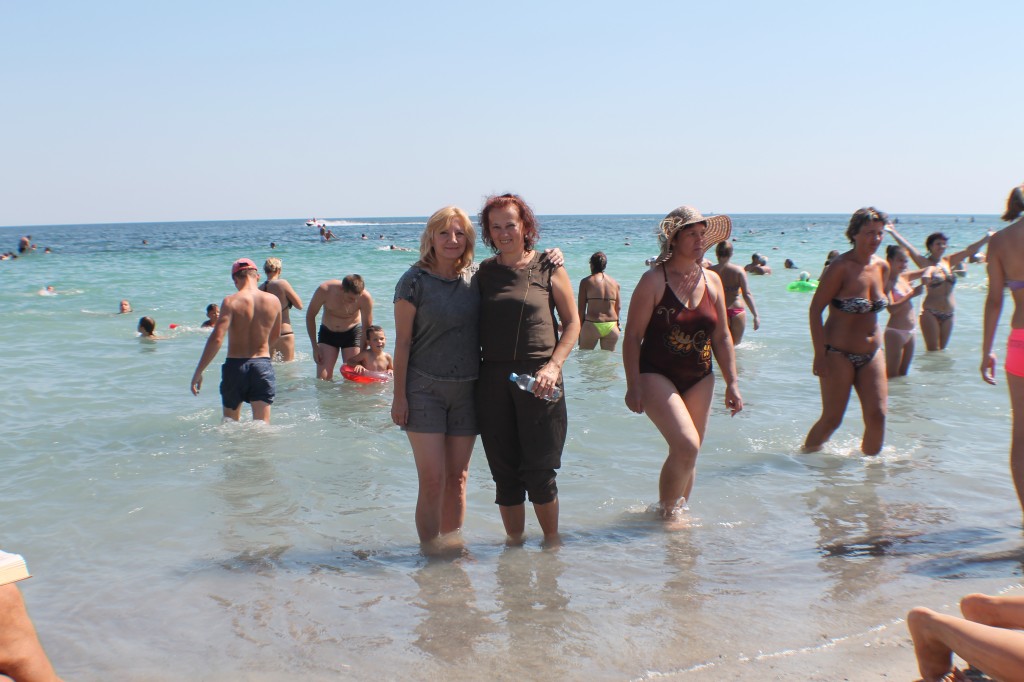
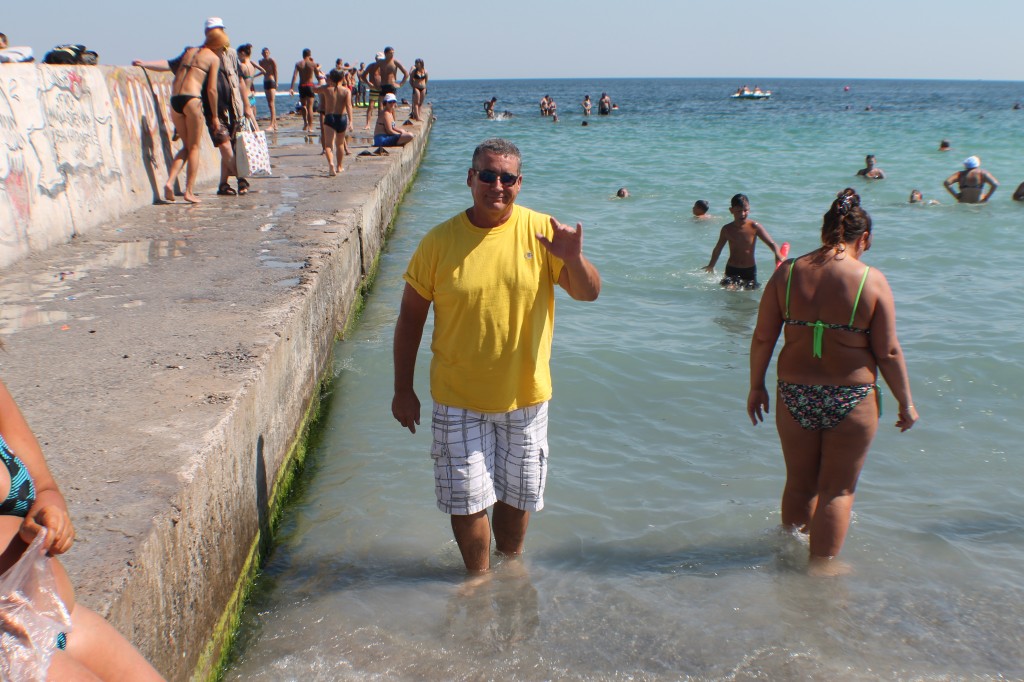
In the Langeron beach area a large newly built Dolphinarium allows the guests to either watch a show or swim with the dolphins (certain hours). Other popular entertainment options include Jet Ski Rentals, speed boat rides and various other water related activities.
We visited the harbor – Morskoy Voksal of Odessa. It is below the Potemkin Stairs and is one of the largest ports of the Black Sea coast.
Then we stopped at the restaurant оn the water “Koleso” for dinner. This restaurant offers tasty food and unusual interior.
